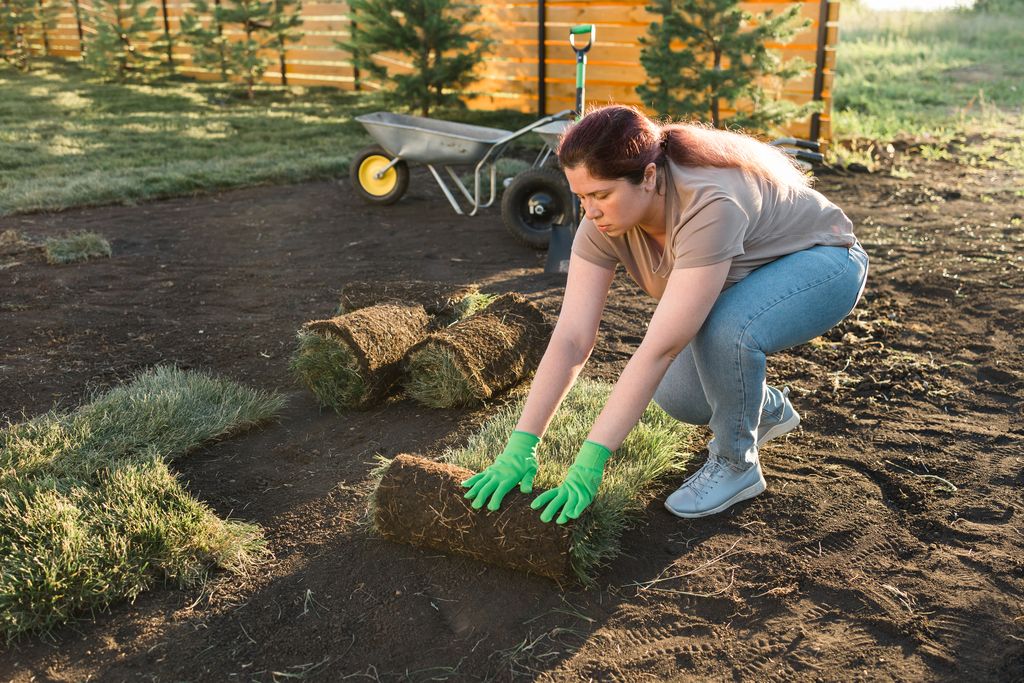Have you ever looked out at your lawn only to find patches of brown grass hiding in the shadows? You’re not alone!
Lawn repair from shade is a common challenge for many homeowners.
Too much shade can lead to unsightly brown spots and unhealthy grass.
In this guide, we’ll explore effective methods to revive your lawn and restore its lush green glory!
This post contains affiliate links. As an Amazon Associate, I earn from qualifying purchases at no additional cost to you.
Understanding Shade and Its Impact on Your Lawn
Before diving into lawn repair, it’s essential to understand how shade affects your grass.
Grass typically needs sunlight to thrive, and prolonged exposure to shade can stunt its growth.
Here’s how shade impacts your lawn:
- Reduced Photosynthesis: Grass needs sunlight to produce energy.
- Increased Moisture: Shade can lead to damp conditions, promoting mold and disease.
- Weed Growth: Shady areas can become a breeding ground for weeds.
- Weak Root Systems: Grass in low light tends to have shallow roots, making it vulnerable.
Identifying Shade Problems in Your Lawn
To effectively tackle lawn repair, you first need to identify the source of the shade.
Common culprits include:
- Overhanging tree branches
- Nearby structures (like fences or buildings)
- Tall shrubs or hedges
Once you know the cause, you can decide the best course of action for your lawn.
Steps for Lawn Repair from Shade
Here are some actionable steps to repair lawn damage caused by shade:
1. Assess the Shade Levels
Check how much sunlight your lawn receives throughout the day.
This will help you choose the right grass for shaded areas.
2. Prune Trees and Shrubs
Consider pruning overhanging branches or trimming shrubs to allow more light to reach your lawn.
This simple step can have a significant impact on grass health.
3. Choose Shade-Tolerant Grass Varieties
If your lawn is mostly shaded, opt for grass types that thrive in low light.
Here’s a comparison of some popular shade-tolerant grasses:
| Grass Type | Sunlight Requirement | Best for |
|---|---|---|
| Fine Fescue | Partial to full shade | Cool-season areas |
| Kentucky Bluegrass | Moderate shade | Cool-season areas |
| Zoysia Grass | Partial shade | Warm-season areas |
| Bermudagrass | Full sun, tolerates some shade | Warm-season areas |
4. Aerate the Soil
Aerating your lawn helps improve air circulation and allows nutrients to penetrate deeper.
This can be a great way to rejuvenate struggling grass in shaded areas.
5. Overseed and Fertilize
Once you’ve prepared the area, overseed with shade-tolerant grass seed.
Follow this up with a slow-release fertilizer to give the new seeds a boost.
Here are some tips for successful overseeding:
- Choose the right time: Early spring or early fall is ideal.
- Spread the seeds evenly using a broadcast spreader.
- Water lightly but frequently until the seeds germinate.
6. Regular Maintenance
After your lawn repair efforts, regular maintenance is crucial.
Make sure to:
- Mow at the right height (usually higher for shady areas).
- Water deeply but less frequently to encourage deep root growth.
- Keep an eye out for pests and diseases.
Additional Tips for Successful Lawn Repair
Here are some extra tips to help your lawn thrive even in shady conditions:
- Mulching: Use mulch around trees and shrubs to suppress weeds and retain moisture.
- Soil Testing: Test your soil to ensure it has the right pH and nutrient levels for grass growth.
- Pathways: Create safe walking paths with stepping stones or mulch to minimize foot traffic on delicate grass.
Conclusion
Repairing lawn damage from shade doesn’t have to be a daunting task.
By assessing the situation, choosing the right grass, and following a few simple maintenance steps, you can restore your lawn to its former glory.
Remember, patience is key—grass takes time to grow! So grab your gardening gloves and get started on your lawn repair journey today. Your lawn will thank you for it!



